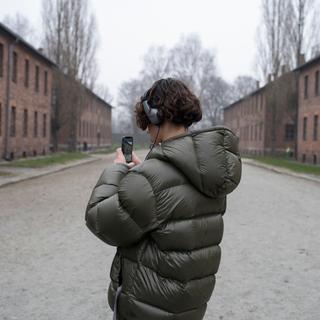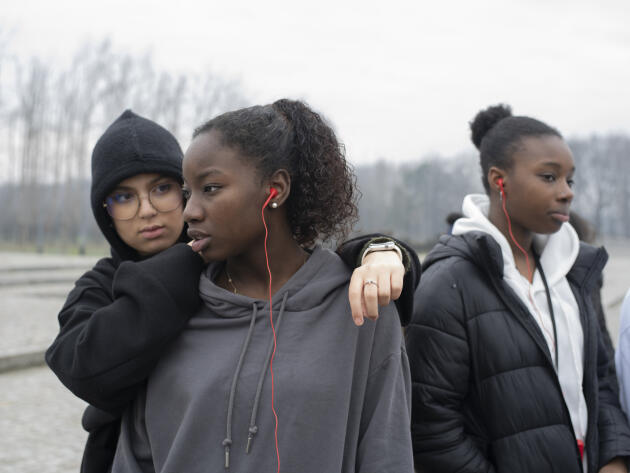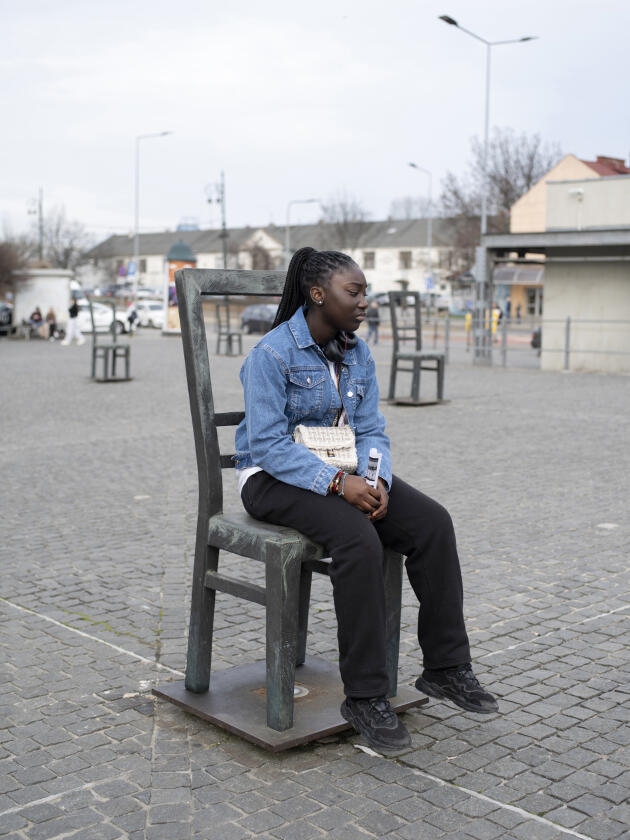


At Auschwitz-Birkenau, pupils from a Paris suburb face the memory of the Holocaust
FeatureAt the end of February, middle schoolers traveled to Krakow and Auschwitz in an effort to raise awareness of the genocide and prevent anti-Semitism.
Up until then, it had been a school trip like any other: Pupils from the Romain-Rolland middle school in Clichy-sous-Bois, a suburb east of Paris, were filming the outskirts of Krakow through the bus window with their smartphones, sharing sweets and laughing. Then, all of a sudden, something grabbed their attention. An icy whisper, like a breath, silenced their conversations. Outside, on the right, they had just seen the infamous silhouette of the Birkenau watchtower appear in the misty morning. "It's huge," whispered Nazim.
This study trip to Krakow and Auschwitz-Birkenau, organized at the end of February by the Holocaust Memorial in partnership with the French department of Seine-Saint-Denis, was the first of its kind for middle schoolers in that department, with the aim of raising awareness of the memory of genocide and preventing anti-Semitism. Usually, it's the high schools that send their pupils. France's school curricula provide for studying the Holocaust on three occasions: in the last year of primary school, in the last year of middle school, and in the penultimate year of high school (optionally, in vocational schools).


On the eve of departure, in a classroom at the middle school, no one spoke a word, apart from Nazim, who was particularly interested in the subject. His teachers later admitted, a little worried, that he had rushed to watch Steven Spielberg's Schindler's List (1993) and Roman Polanski's The Pianist (2002), alone at home. "I'm going to have to calm him down a bit, these are difficult images for a young person of his age," said Carole Couderc, the history teacher who spearheaded the project. "As we're not there to debrief with him, it can be complicated."
Most of the students found it hard to imagine what they were going to see. Their teacher took over, talking with them about local places of remembrance they'd already visited, such as the Shoah Memorial in Drancy, the internment camp near Paris from where Jews were deported to extermination camps during World War II. The history syllabus includes a study "wars of annihilation" in the broadest sense, by comparing the genocide of Jews with other events where hatred led to the worst.
Double logic
During the two-day trip, the teachers sought to create an encounter between a group of children from immigrant backgrounds and the memory of a Europe their grandparents never knew, seeing as the overwhelming majority of them came from former French colonies such as Algeria or Senegal.

Over the course of the trip, the history teacher returned several times to the twofold method that drives her: to approach the memory of the genocide through knowledge, but also through her pupils' own experiences. In other words, the history of their region – Seine-Saint-Denis having been the departure point for most deportees from France – and their own personal family history. "Teachers have often been criticized for taking a compassionate approach to the genocide of the Jews," said Couderc. "Like many of us, I learned about the Holocaust by looking at images of emaciated bodies in history class. But what do we retain in terms of knowledge? I'm teaching them to take a historian's approach, based on facts, but they're also teenagers, and a teenager is a whole: a pupil, a citizen, an individual, with his or her own history and sensibility."
You have 68.72% of this article left to read. The rest is for subscribers only.
